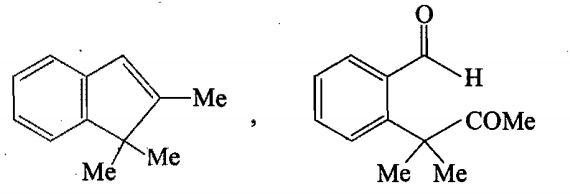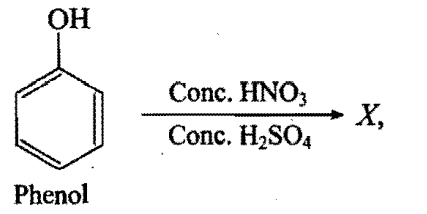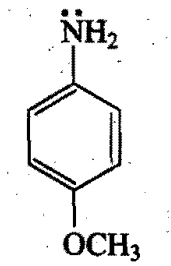Chemistry-
General
Easy
Question
A carbonyl compound P, which gives positive iodoform test, undergoes reaction with MeMgBr followed by dehydration to give an olefin Q. Ozonolysis of Q leads to a dicarbonyl compound R, which undergoes intramolecular aldol reaction to give predominantly S.

The structures of the products Q and R, respectively, are:




The correct answer is: 
Related Questions to study
Chemistry-
Consider the following reactions I and II,
I) 
II) 
Products 'X' and 'Y' are respectively:
Consider the following reactions I and II,
I) 
II) 
Products 'X' and 'Y' are respectively:
Chemistry-General
Chemistry-
In which of the following cases, the nitration will take place at meta-position?
I) 
II) 
III) 
IV) 
In which of the following cases, the nitration will take place at meta-position?
I) 
II) 
III) 
IV) 
Chemistry-General
Chemistry-
The correct order of decreasing basicity of the following compounds is:
I) 
II) 
III) 
IV) 
The correct order of decreasing basicity of the following compounds is:
I) 
II) 
III) 
IV) 
Chemistry-General
Chemistry-
Phenol . gives two polymers on condensation with formaldehyde:

X and Y are :
Phenol . gives two polymers on condensation with formaldehyde:

X and Y are :
Chemistry-General
Chemistry-
 X and Yare:
X and Yare:
 X and Yare:
X and Yare:
Chemistry-General
Chemistry-
Chemistry-General
Maths-
Simplify : 2m-3 =17
Simplify : 2m-3 =17
Maths-General
Physics-
In the figure is shown Young’s double slit experiment. Q is the position of the first bright fringe on the right side of O. P is the 11th fringe on the other side, as measured from Q. If the wavelength of the light used is  , then
, then  will be equal to
will be equal to

In the figure is shown Young’s double slit experiment. Q is the position of the first bright fringe on the right side of O. P is the 11th fringe on the other side, as measured from Q. If the wavelength of the light used is  , then
, then  will be equal to
will be equal to

Physics-General
Physics-
When one of the slits of Young’s experiment is covered with a transparent sheet of thickness 4.8 mm, the central fringe shifts to a position originally occupied by the 30th bright fringe. What should be the thickness of the sheet if the central fringe has to shift to the position occupied by 20th bright fringe
When one of the slits of Young’s experiment is covered with a transparent sheet of thickness 4.8 mm, the central fringe shifts to a position originally occupied by the 30th bright fringe. What should be the thickness of the sheet if the central fringe has to shift to the position occupied by 20th bright fringe
Physics-General
Physics-
Figure here shows P and Q as two equally intense coherent sources emitting radiations of wavelength 20 m. The separation PQ is 5.0 m and phase of P is ahead of the phase of Q by 90o. A, B and C are three distant points of observation equidistant from the mid-point of PQ. The intensity of radiations at A, B, C will bear the ratio

Figure here shows P and Q as two equally intense coherent sources emitting radiations of wavelength 20 m. The separation PQ is 5.0 m and phase of P is ahead of the phase of Q by 90o. A, B and C are three distant points of observation equidistant from the mid-point of PQ. The intensity of radiations at A, B, C will bear the ratio

Physics-General
Maths-
Represent -7 + 3 on number line
When we add something to the given number, we don’t start counting the second number from zero. We count the places from the number itself. Any negative value means we move in left direction. Any positive value means we move in right direction.
Represent -7 + 3 on number line
Maths-General
When we add something to the given number, we don’t start counting the second number from zero. We count the places from the number itself. Any negative value means we move in left direction. Any positive value means we move in right direction.
Maths-
Statement-I: 
Statement-II: If 0<a<b, then 
Statement-I: 
Statement-II: If 0<a<b, then 
Maths-General
Maths-
Statement-I: 
Statement-II: If a>0, a>b, then 
Statement-I: 
Statement-II: If a>0, a>b, then 
Maths-General
Maths-
Statement-I: 
Statement-II: If a>b then 
Statement-I: 
Statement-II: If a>b then 
Maths-General
Maths-
Statement-I: 
Statement-II: If a<b then 
Statement-I: 
Statement-II: If a<b then 
Maths-General





